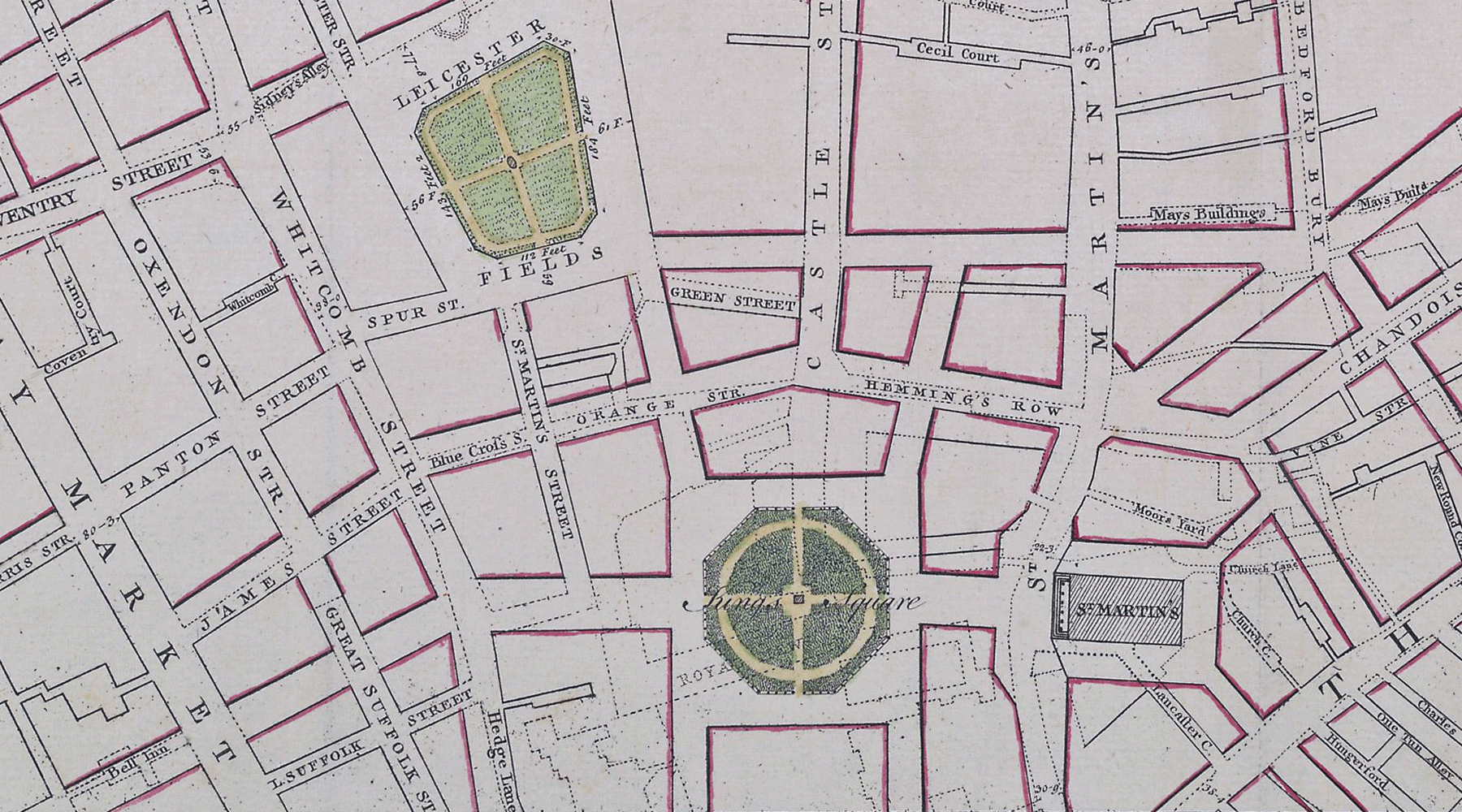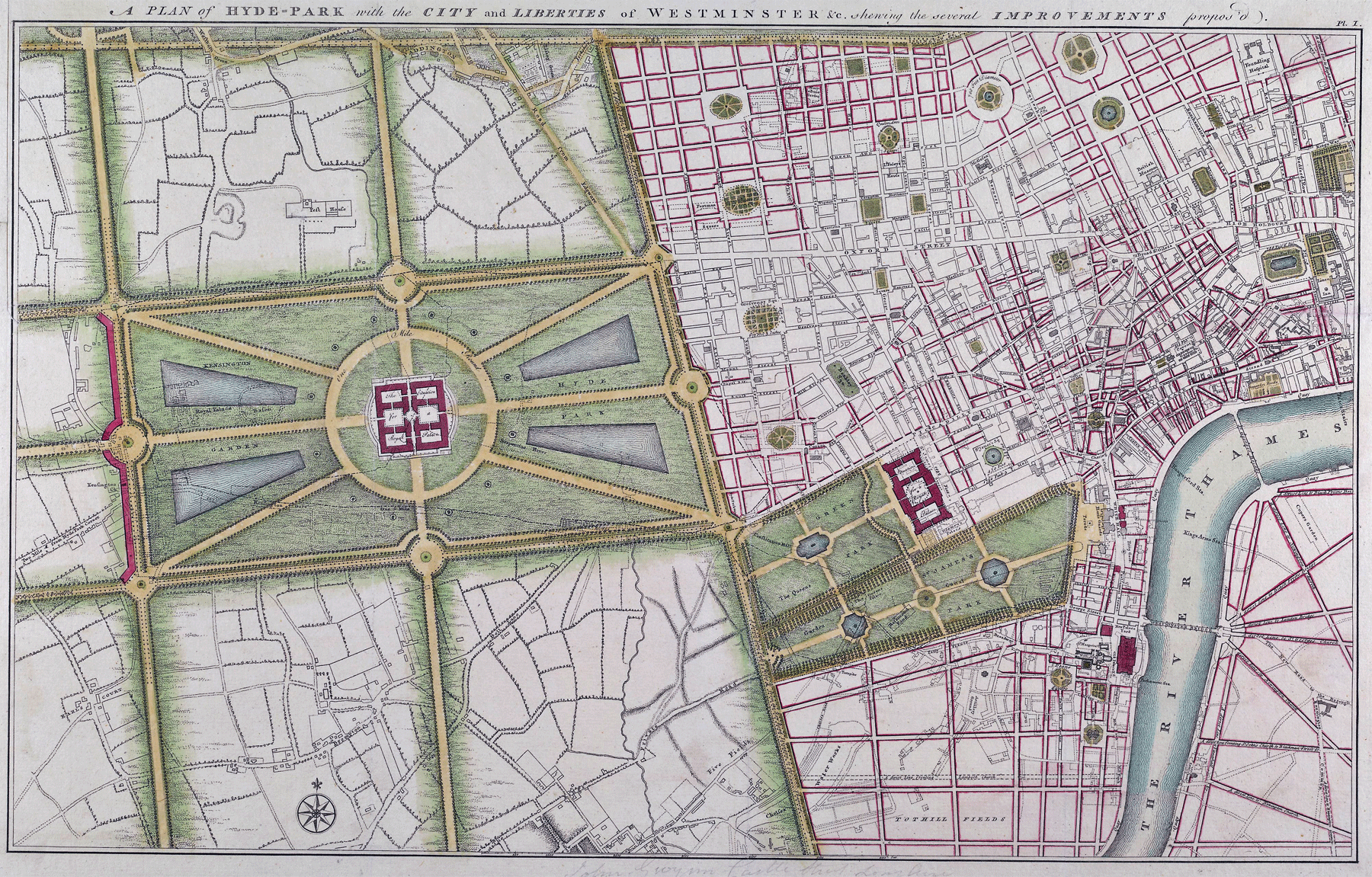In 1766, a plan was published for the improvements of London and Westminster that could have resulted in Trafalgar Square as we know it today looking rather more like Leicester Square.
A small grassy circle surrounded by grand buildings.
The plans were drafted by the architect, John Gwynn, who is as notable for being one of the founders of the Royal Academy in 1768 as he was for producing schemes to improve cities that were never used.
One of his grandest was to clean up the myriad of small crooked roads that still defines the city today, and replace with wide and very straight roads instead. The idea would have transformed London on a scale unseen since the Great Fire, and would in all likelihood still dominate the landscape of the West End today.
One of the key changes is one that at the time the plans were published would have been seen as a grand idea – was for the area that we today know as Trafalgar Square to have the old buildings that covered the site at the time cleared away and a new garden square built.
The new King’s Square would sit on the site of the Royal Mews and would have been seen as a considerable addition of public space in the crowded city.
It’s fortunate for us that it never happened, and 70 years later, the much larger Trafalgar Square was built instead. It’s an accident of history that London ended up with a large open paved square that can accommodate huge numbers of people and hence is a centre of national events, rather than a small garden square that would be an unremarkable space in a busy city.
John Gwynn’s ambitions though stretched far beyond tidying up the mess of narrow roads around Charing Cross.
He planned two, yes, two, grand new royal palaces.
It was only a few years since King George III had bought Buckingham House for his new palace, and John Gwynn felt it unsuitable for a monarch — so he planned a huge new building where St James Palace is today, and another even larger palace right in the middle of Hyde Park.
He also had eyes on the City of London, planning to achieve the same aim around Mansion House as he planned for Charing Cross — and to create wide-open roads where narrow alleys prevailed.
Fortunately, much wiser heads prevailed and his plans were quietly put away and forgotten about.
John Gwynn had fallen into the trap of thinking that if you plan a big expensive design, then that will itself be enough to make people stump up the vast sums of money needed to build them. While the plans had been dedicated to the King, it was Parliament which would need to pay for them, and even back then, MPs were not totally immune to the need to please their constituents and would never have voted for the taxes to pay for such an expensive scheme.
Grand Georgian squares and wide roads were being developed, on the edges of the city — in Marylebone and Fitzrovia, where it was affordable to build in that style on empty farmland but to demolish the city as well, was a cost and ambition too far.
Even the Monthy Review, which was generally favourable admitted that “though Mr. Gwynn’s ingenious plan should prove an impracticable one, on the whole, his work is a truly valuable performance,”
Some years later, the Quarterly Review noted in 1826 that “No part of his ingenious design, however, was adopted: the publication does not appear to have produced any public interest at the time; and Mr. Gwynn has been so little thought of since that his designs lately brought forward as original conceptions.”
That said, he was responsible for the introduction of the Building Act of 1774 which forced developers to improve their construction methods, with the result that many of the new developments that did take place on the edges of London at the time, are today the grand avenues and squares that are so admired.
He may not have succeeded in tearing down old London, but he did make sure the new London was built well.
Sources:
London and Westminster Improved, John Gwynn
Designs on the City: John Gwynn’s Plans for Georgian London, Miles Ogborn
The Monthly Review. v.35 (1766)
The Quarterly Review. 36 (67): 183–4. 1826









